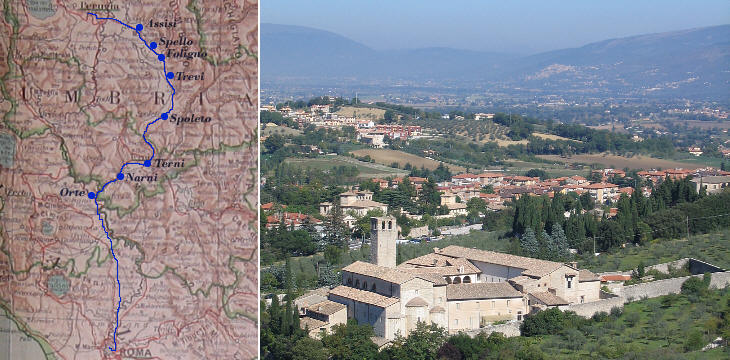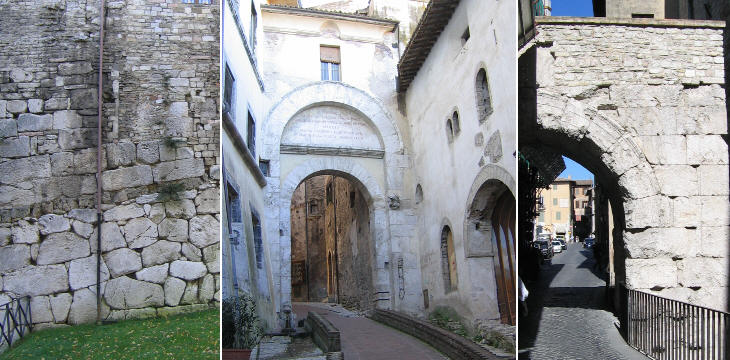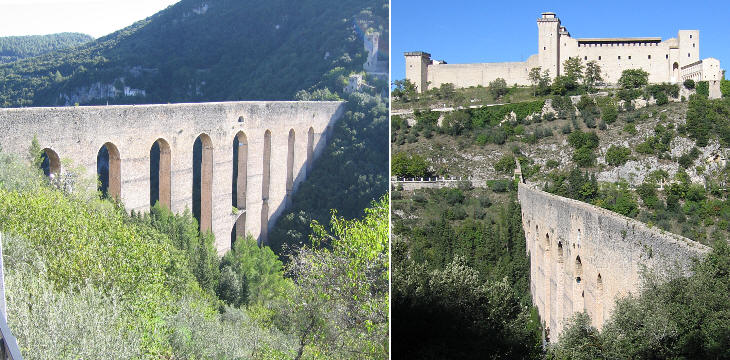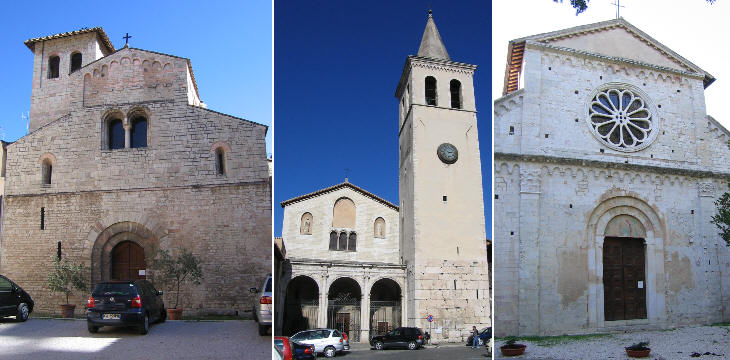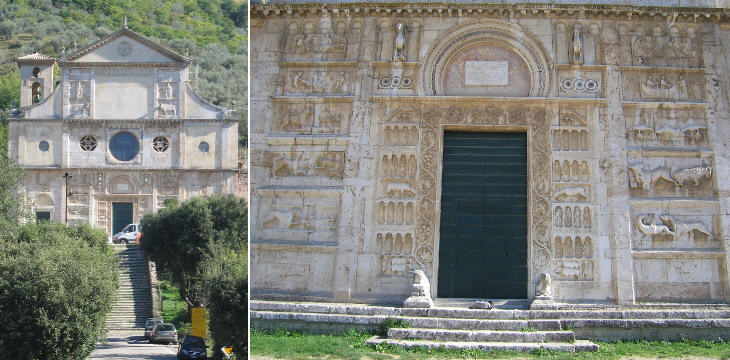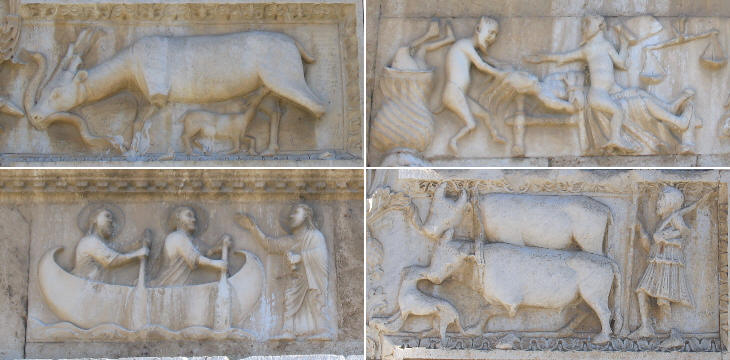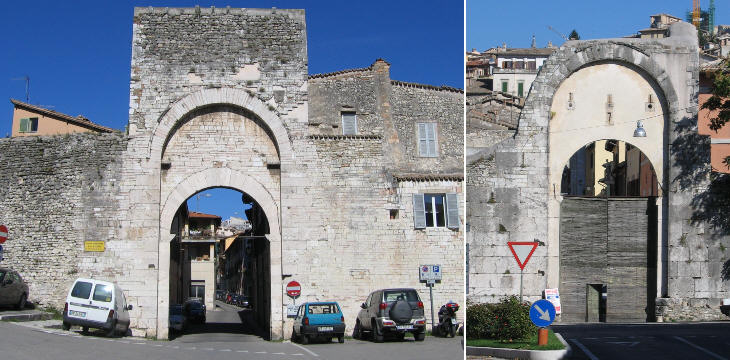  What's New! Detailed Sitemap All images © by Roberto Piperno, owner of the domain. Write to romapip@quipo.it. Text edited by Rosamie Moore. Page added in November 2006. |
Everyday a train leaves Termini at 8:14. First stop: Orte; second stop: Narni; third stop Terni; fourth stop ... 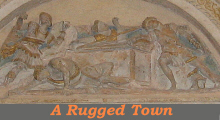 Spoleto Spoleto(relief of a tabernacle in S. Gregorio Maggiore) After Terni the 8:14 train leaves the Nera valley and it moves northwards through a ridge of low hills: it soon reaches a large valley known as Valle Umbra (Umbrian Valley), which was also called Valle spoletina, after Spoleto the town located on a hill at its southern end.
In ancient times the valley was covered by a lake (Lago Tiberino): the deposits carried by the streams flowing into the lake from the Apennines gradually filled it and eventually the Etruscans opened a canal at the northern end of the lake to allow the remaining water to flow into the Tiber.
The valley was always at risk of becoming a marshland until the Romans in the Ist century BC assigned its territory to a large number of veterans. They dug canals, planted willow trees and poplars to absorb the excessive water, introduced a farming mix which included grains, orchards, olive trees and vineyards. Spoleto was built by the Romans on an existing settlement of the local Umbrian tribes: the lower part of the Roman walls shows sections which belong to these early settlements. Spoleto played an important role during the Second Punic War by stopping Hannibal, who after the victory at Lake Trasimeno, wanted to rapidly reach Rome, but was forced to make a detour because of the resistance of the town: the name of one of the old gates Porta della Fuga (Gate of the Flight) recalls that episode. Spoleto retains several monuments of its Roman past including an arch, a theatre and an amphitheatre.
In 576 Spoleto became the centre of an important duchy established by the Longobards and for many centuries it was the most important town of Umbria: in the XIIth century it was destroyed by the German emperor Frederick Barbarossa, but Spoleto recovered very quickly and became one of the strongest Comune (town-state) of Umbria: this development was helped by the anarchy which existed in the Papal State, to which the town belonged. The growth of Spoleto continued until 1359 when Cardinal Gil de Albornoz restored the papal authority and built a strong fortress (see a a related page) on the top of the hill; the fortress was supplied by an aqueduct which crossed a deep ravine through a very spectacular bridge.
Some of the medieval towers of Spoleto have a distinct design: their corners were built using stones having a different colour. Torre dell'Olio owes its name to the boiling oil which was thrown from it upon the assailants.
Spoleto has several Romanesque churches built between the XIth and the XIIIth century: in some cases (the bell tower of S. Gregorio Maggiore and parts of S. Eufemia) stones from Roman buildings were used. The Latin words inter vineas mean among the vineyards; this because the church is located out of town.
The finest Romanesque church is no doubt S. Pietro which is located outside the walls. Its fašade is almost entirely decorated with very fine and interesting reliefs.
We do not know the name of the artists who worked on the decoration of the fašade: the reliefs to the sides of the main door are likely the work of the same sculptor: although apparently they do not seem to have a common theme, they do have one: the fight between good and evil illustrated by episodes taken from the Bible and from medieval accounts.
In the XIIIth century Spoleto expanded well beyond the limits of the Roman town on the hill: in 1296 the municipal authorities built new walls at the foot of the hill. The image in the background of this page shows a relief near Porta di Monterone portraying a knight, symbol of Spoleto. Move to page two. 
1864 clickable map of Umbria |
